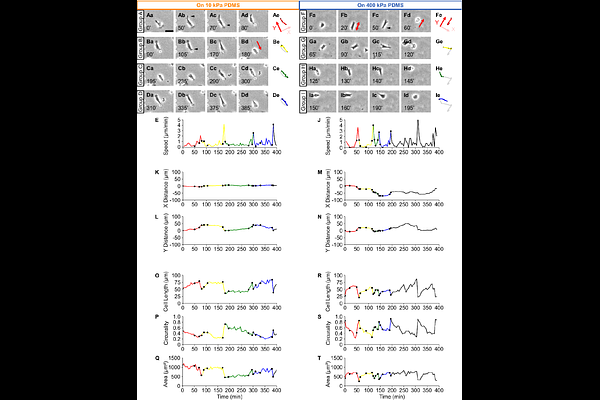Influence of Substrate Elastic Modulus on Cell Shape and Displacement During the Motility Cycle

Influence of Substrate Elastic Modulus on Cell Shape and Displacement During the Motility Cycle
Nagai, A.; Kuwabara, H.; Moriyama, Y.; Mitsui, T.
AbstractCardiac fibroblasts play a pivotal role in heart tissue dynamics, responding to mechanical cues from their environment. This study examines how substrate elasticity influences the motility and shape of chicken embryonic cardiac fibroblasts on polydimethylsiloxane (PDMS) substrates of different stiffness (10 kPa and 400 kPa). Using time-lapse phase-contrast microscopy, we identified distinct motility cycles characterized by elongation, contraction, and retraction phases. On soft substrates, cells exhibited slower retraction speeds and longer motility cycles compared to those on hard substrates. Notably, cells on soft substrates left trailing edges upon retraction, leading to pronounced morphological oscillations, whereas cells on hard substrates adopted near-circular shapes with less coordinated motility. Quantitative analyses revealed that the duration of the static phase was significantly shorter on hard substrates, correlating with differences in cell shape parameters, including length, circularity, and area. These findings suggest that substrate elasticity modulates the balance between cell-substrate adhesion and contractile forces, influencing cell polarity and motility. Our work advances the understanding of how mechanical environments shape fibroblast dynamics, offering insights relevant to tissue engineering and fibrosis research.